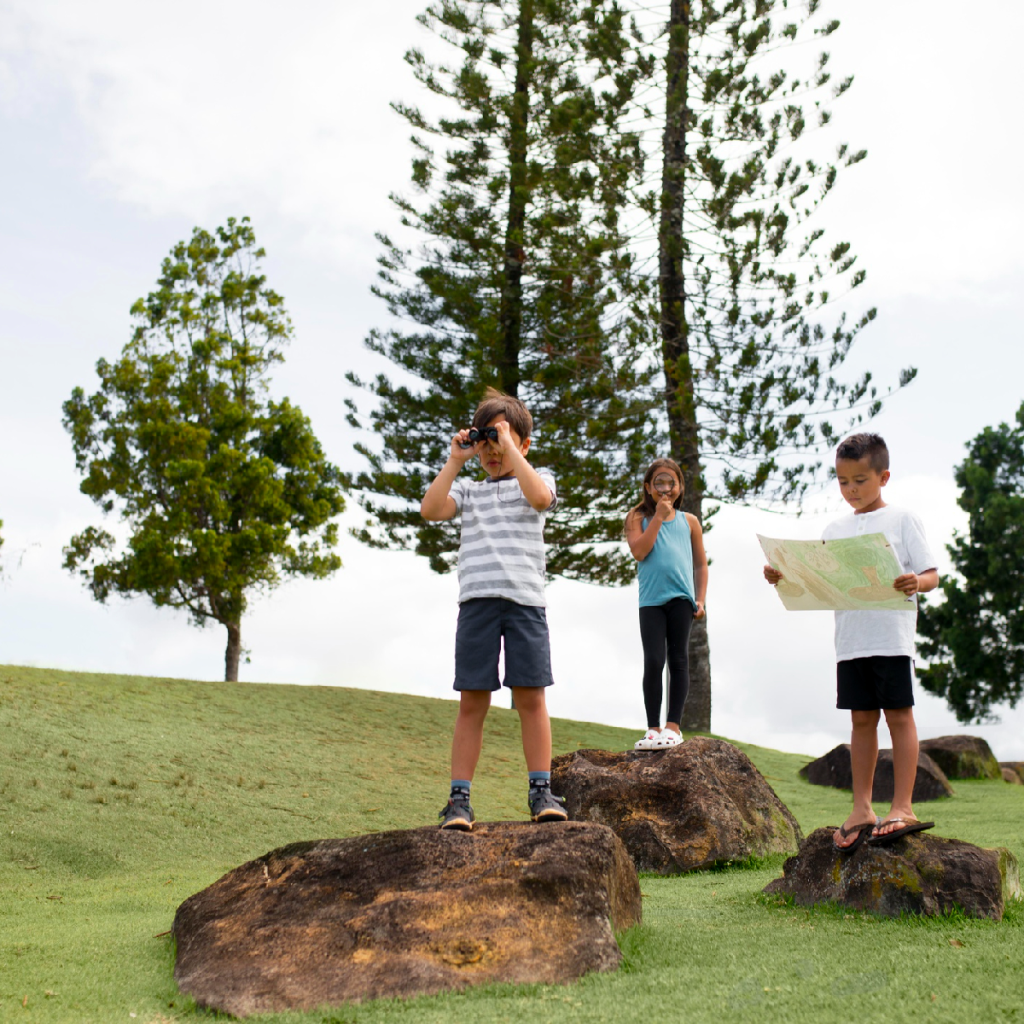Discover effective strategies for teaching navigational skills to 4-5 year old children.
Teaching Navigational Skills to 4-5 Year Old Children
As children grow and explore the world around them, it becomes essential to equip them with navigational skills. Being able to find their way, recognize landmarks, and understand directions are all valuable life skills. In this article, we will delve into the importance of teaching navigational skills to 4-5 year old children and explore various techniques to make learning fun and engaging.

Understanding the Importance of Navigational Skills
Before we delve into the techniques, let’s take a moment to understand why navigational skills are important for young children.
As children grow and explore the world around them, developing navigational skills becomes crucial. These skills not only help them find their way from one place to another but also have a profound impact on their cognitive development, safety, and independence.
Cognitive Development and Navigation
Learning navigation helps children develop their spatial awareness and enhances their cognitive abilities. By understanding how to read maps, recognize landmarks, and follow directions, children exercise their problem-solving skills and boost their overall mental capabilities.
When children engage in navigation activities, they are required to think critically, make decisions, and analyze their surroundings. This process stimulates their brain and encourages the development of important cognitive skills such as memory, attention, and spatial reasoning.
Imagine the excitement on their faces when they successfully navigate their way to a hidden treasure using their newly acquired navigational skills! This sense of accomplishment not only reinforces their cognitive development but also instills a love for exploration and discovery.
Safety and Independence
Teaching children how to navigate their surroundings instills a sense of safety and independence in them. Whether it’s finding their way home from school or exploring the neighborhood park, having a basic understanding of navigation empowers children to confidently navigate their environment.
When children possess navigational skills, they are better equipped to handle unexpected situations and make informed decisions. They can identify potential hazards, find alternative routes, and seek help if needed. This knowledge not only keeps them safe but also builds their self-confidence and resilience.
By fostering a sense of independence early on, we allow children to gain valuable life skills and build their self-confidence. As they grow older, these skills will become even more essential, enabling them to navigate unfamiliar places, travel independently, and explore the world with confidence.
So, let’s embark on this journey of understanding and honing navigational skills, as we equip our children with the tools they need to navigate the world around them!
Basics of Navigational Skills for Children
Now that we understand why navigational skills are important, let’s dive into the basics of teaching navigation to 4-5 year old children.
Developing navigational skills in children is not only beneficial for their safety but also helps in building their confidence and independence. By teaching them how to navigate their surroundings, we empower them to explore the world around them with a sense of direction and purpose.
Recognizing Landmarks
Landmarks are like breadcrumbs that guide us on our way. Teaching children to recognize landmarks helps them create mental maps of their surroundings.
Take your little ones on walks and encourage them to point out familiar landmarks such as the towering oak tree or the brightly colored house. Talk about these landmarks and use them as reference points when discussing directions with your child.
Furthermore, you can expand their understanding of landmarks by introducing them to historical landmarks in your community. Take them to visit a local monument or a famous building and explain its significance. This not only enhances their navigational skills but also broadens their knowledge about their environment and its history.
Understanding Directions
Understanding directions is a crucial part of navigation. Start by teaching children the basic concepts of left, right, straight, and back.
Engage in playful activities where your child has to follow directions. Create a simple treasure hunt in the backyard and provide step-by-step instructions for them to find hidden treasures. This way, they will learn to interpret and follow directions while having a blast!
As they become more comfortable with basic directions, you can introduce more complex navigational concepts such as cardinal directions (north, south, east, west) and using a compass. Make it a fun learning experience by incorporating games and puzzles that require them to navigate using these concepts.
Additionally, encourage your child to use their navigational skills in everyday situations. For example, when you go grocery shopping, ask them to help you find specific items by following the store’s layout or signs. This will not only reinforce their understanding of directions but also boost their confidence in their navigational abilities.
Remember, teaching navigational skills to children is an ongoing process. Continuously provide opportunities for them to practice and reinforce what they have learned. With time and practice, they will develop a strong sense of direction and become confident navigators in their own right.
Techniques for Teaching Navigational Skills
Now that the basics are covered, it’s time to explore some engaging techniques to teach navigational skills to young children.
Incorporating Navigation in Play
Children learn best when they are having fun. Incorporate navigation into their playtime by creating scavenger hunts or treasure hunts. Hide clues around the house or garden, and let your child follow the clues to find the hidden treasure. This playful approach keeps them engaged and excited about learning navigational skills.
Imagine the thrill on your child’s face as they decipher the first clue and set off on a grand adventure. As they navigate through the clues, they develop their problem-solving skills and spatial awareness. Each step brings them closer to the treasure, fostering a sense of accomplishment and boosting their confidence.
Scavenger hunts can be tailored to different environments and themes. You can create a nature-themed hunt in the local park, where your child learns to navigate using landmarks and natural features. Or, you can organize an indoor treasure hunt, where they practice reading and interpreting clues to find hidden objects.
Using Technology for Teaching Navigation
In this digital age, technology can be a fantastic tool for teaching navigation. There are various educational apps and games available that provide interactive maps and navigation challenges specifically designed for young children. Let your child explore these apps under your guidance, helping them understand how maps work and how to navigate using digital tools.
With the help of technology, your child can embark on virtual journeys, exploring different landscapes and navigating through virtual worlds. They can learn about cardinal directions, map symbols, and even how to use a compass. These interactive experiences make learning navigation exciting and accessible.
As your child interacts with the digital tools, they develop their fine motor skills and hand-eye coordination. They also learn to follow instructions and make decisions based on the information provided on the screen. This combination of technology and navigation skills prepares them for the increasingly digital world they will navigate as they grow older.
Overcoming Challenges in Teaching Navigation
Teaching navigational skills can be an exciting and rewarding experience. However, like any educational endeavor, there are challenges that educators may encounter along the way. Let’s explore two common challenges and discover effective strategies to tackle them.
Addressing Fear of Getting Lost
One of the challenges that some children may face while learning navigation is the fear of getting lost. This fear can be paralyzing and hinder their ability to explore and navigate new environments confidently. As educators, it is crucial to address this fear head-on and provide reassurance and guidance.
One effective way to tackle this challenge is by emphasizing safety measures. Teach children about the importance of staying in familiar areas and always having a trusted adult or friend accompany them when venturing into unknown territories. By instilling a sense of security and emphasizing the importance of responsible navigation, children can gradually overcome their fear of getting lost.
Furthermore, as children gain more experience and confidence in their navigation skills, their fear of getting lost will naturally diminish. Encourage them to start with small, familiar routes and gradually progress to more challenging ones. Celebrate their achievements and highlight the progress they have made, reinforcing their newfound independence and self-assurance.
Dealing with Short Attention Span
Another common challenge when teaching navigation to young children is their short attention span. Keeping their focus and engagement throughout the learning process can be a daunting task. However, with creative and interactive teaching methods, this challenge can be overcome.
One effective strategy is to break down navigation lessons into smaller, bite-sized activities that capture children’s attention. Instead of long lectures or monotonous explanations, incorporate hands-on activities and games that make learning navigation fun and interactive.
For instance, you can create a “directions dance” activity where children have to follow your dance moves as you mimic different directions. By combining learning with physical activity, this approach not only captures their attention but also makes the lesson more memorable and enjoyable.
Additionally, incorporating visual aids such as maps, compasses, or even virtual navigation tools can help sustain children’s interest and enhance their understanding of navigation concepts. By appealing to different learning styles and providing a variety of engaging activities, educators can effectively address the challenge of short attention spans.
In conclusion, teaching navigation skills may come with its fair share of challenges. However, by addressing the fear of getting lost and finding creative ways to keep children engaged, educators can successfully navigate these obstacles and empower children with valuable navigation skills that will benefit them throughout their lives.
Monitoring Progress and Improvement
As with any learning journey, it’s essential to monitor progress and celebrate achievements along the way.
When it comes to teaching navigational skills to 4-5 year old children, setting milestones can be a valuable tool. By breaking down the learning process into smaller goals, children feel a sense of accomplishment when they achieve each milestone, motivating them to continue their progress.

Setting Milestones in Learning Navigation
Set achievable milestones for your child as they learn navigational skills. For example, “Find three landmarks on your way to the park” or “Draw a map of your bedroom.”
These milestones not only provide a clear path for your child’s learning but also give them a sense of direction and purpose. As they reach each milestone, they gain confidence in their abilities and become more eager to explore and navigate their surroundings.
Furthermore, celebrating each milestone is crucial in keeping your child motivated and engaged. Whether it’s a small reward, a special outing, or simply acknowledging their achievement with praise and encouragement, these celebrations create a positive learning environment and reinforce the value of their progress.
Encouraging Continuous Practice
Encourage your child to practice their navigational skills regularly. Take them on walks or let them lead the way during family outings.
By incorporating navigation into everyday activities, you provide your child with ample opportunities to apply their skills in real-life situations. This continuous practice ensures that their newfound skills become ingrained as second nature, making navigation effortless in the long run.
Additionally, make the practice sessions fun and engaging. You can turn navigation into a game, create scavenger hunts, or even use technology like GPS devices or smartphone apps designed for children to enhance their learning experience.
Remember, learning navigation is not just about acquiring a practical skill; it’s about fostering a sense of independence, curiosity, and confidence in your child. By encouraging continuous practice, you are not only helping them become proficient navigators but also empowering them to explore and discover the world around them.
Teaching navigational skills to 4-5 year old children is an exciting and rewarding endeavor. By understanding the importance of navigation, incorporating playfulness into teaching techniques, and addressing any challenges along the way, we empower children to confidently explore the world around them. So, let’s set our compass and embark on this delightful journey of learning together!



